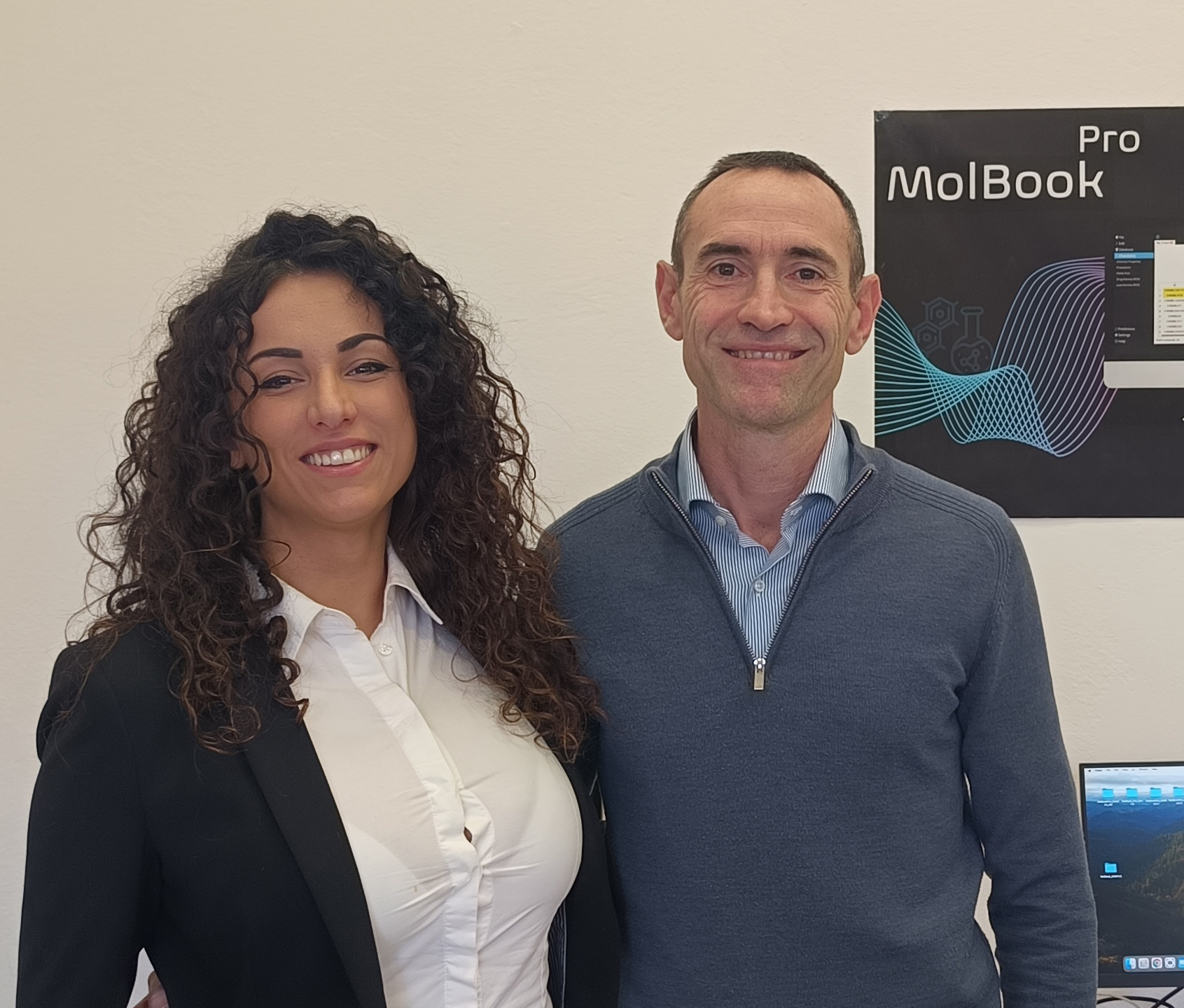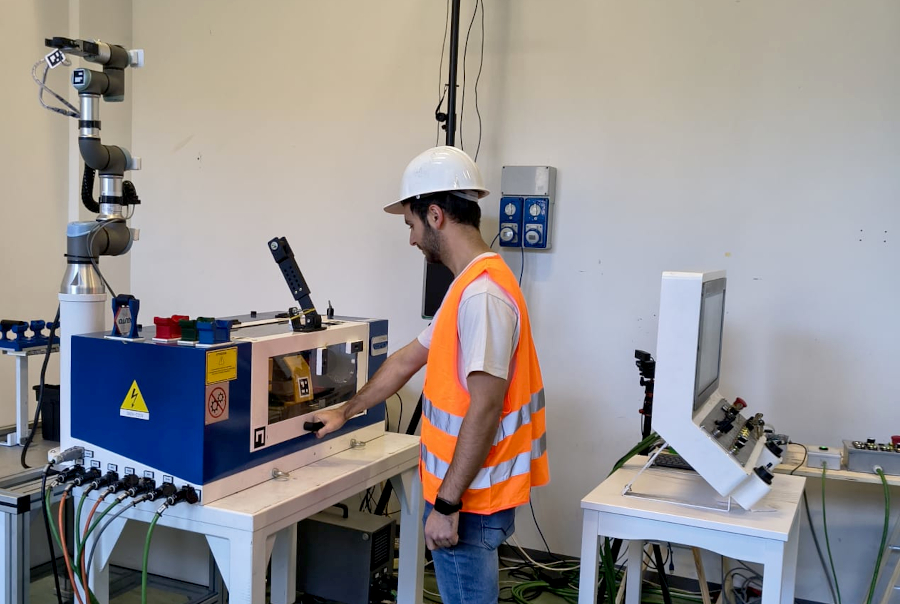A recent scientific analysis carried out on the carbonised papyri of Herculaneum, preserved at the “Vittorio Emanuele III” National Library of Naples, has brought to light new evidence concerning Zeno of Citium, founder of Stoicism, offering an unprecedented insight into his life. Physical frailty, most probably due to a frugal diet, and a tendency to isolation that led him to avoid banquets, confirm the image of an ascetic wholly devoted to philosophical reflection. Stoicism is an ancient philosophical school founded in Athens by Zeno around 300 BC. It teaches how to live according to virtue, reason and nature, in order to attain happiness through control of passions and detachment from what lies beyond one’s power.
The study, published in Scientific Reports (Springer Nature), was conducted within the framework of the ERC Advanced Grant Project 885222-GreekSchools (https://greekschools.eu/), coordinated by Graziano Ranocchia of the Department of Philology, Literature and Linguistics at the University of Pisa. The project is devoted, among other things, to the analysis of the carbonised papyri of Herculaneum using various diagnostic techniques.
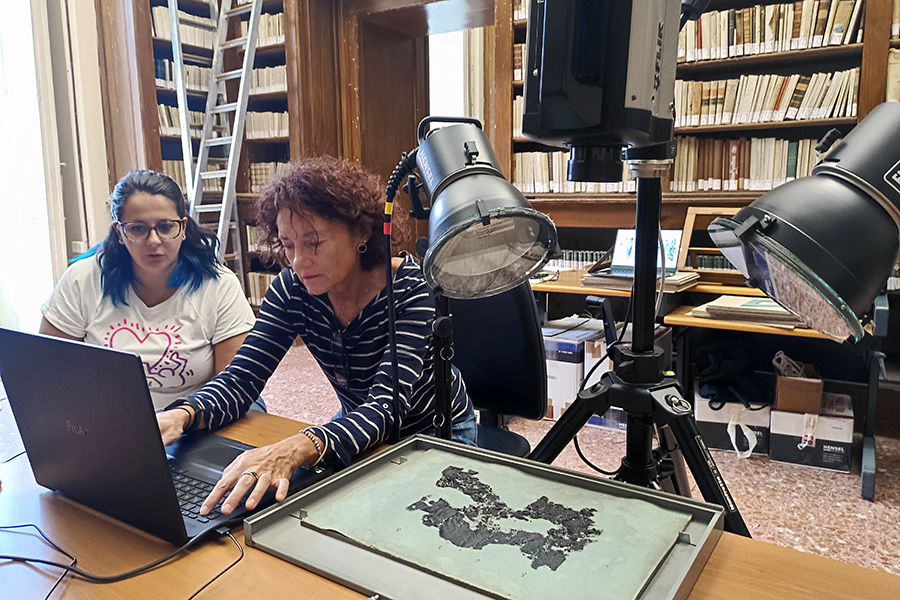
The discoveries were made possible by increasingly precise technologies applied to these fragile texts. For the first time, a team of researchers from the Institute of Heritage Science (CNR-Ispc) and the Institute of Applied Sciences and Intelligent Systems “Eduardo Caianiello” (CNR-Isasi) of the National Research Council applied active thermography to the papyri, making the texts of several unrolled scrolls—otherwise invisible to the naked eye—perfectly legible. These include historical and philosophical works of inestimable value such as the History of the Stoic School, the presumed History of the Pythagorean School, and the so-called History of the Epicurean School by Philodemus of Gadara (110 – after 40 BC), who was the custodian or owner of the celebrated library discovered in the mid-18th century during the Bourbon excavations of the Villa of the Papyri in Herculaneum.
“In papyrus PHerc. 1018, containing the History of the Stoic School, Zeno of Citium’s famous work The Republic is described as morally questionable, since it recommends sexual and social practices deemed embarrassing. Zeno, of Phoenician origin, is mocked for his poor command of the Greek language, a sign of the Greeks’ disdain towards non-Greek-speaking foreigners,” explains Graziano Ranocchia. “It is also reported that, at a banquet or a thermal bath, he complained about being seated near the entrance, and was accused of annoying the young men with his chatter and reproaches, being ridiculed for his supposed inability to provide even a simple cauldron of hot water. However, upon his death, he was accorded a solemn public funeral owing to his great philosophical renown.”
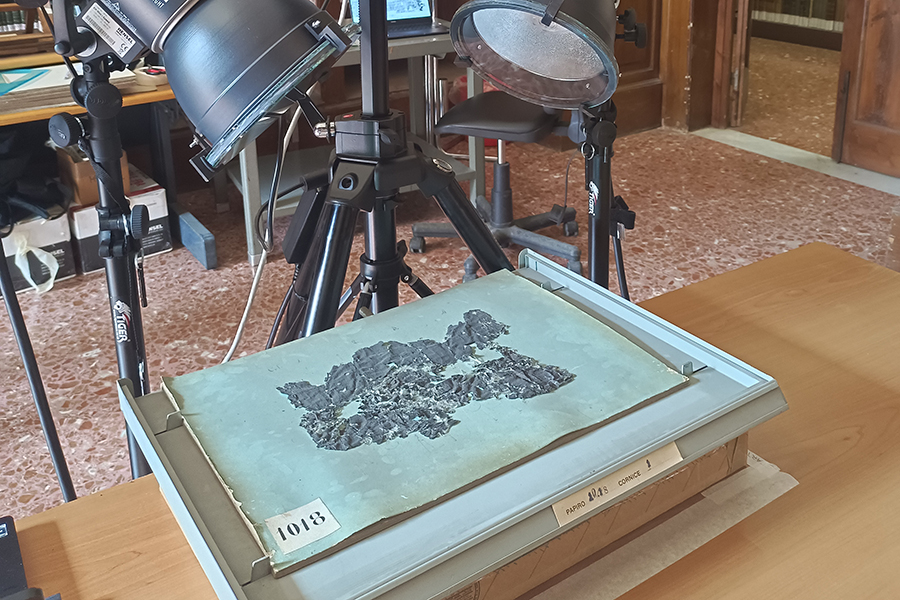
The technology applied
The active thermography technique is capable of creating an unexpected contrast between the writing and the carbonised support—comparable only to that achieved by short-wave infrared (SWIR) hyperspectral imaging—and provides useful information for conservation, such as the characteristics of the papyrus weave and the points where the papyrus sheets were glued to the cardboard backing. The active thermography experiments were carried out with mobile laboratories at the Officina dei Papiri Ercolanesi of the National Library of Naples by two research teams from CNR-Isasi and CNR-Ispc. The latter used portable instrumentation developed within the MUR PON IR SHINE project, aimed at enhancing the MOLAB platform operating within the E-RIHS-ERIC research infrastructure.
New technologies reveal more from ancient texts
Thanks to these new technologies, the latest edition of Philodemus’ History of the Stoic School, edited by Kilian Fleischer of the University of Tübingen, a member of the GreekSchools project, contains 10% more Greek text than the previous 1994 edition—a major achievement that has shed new light on the life and chronology of Zeno of Citium, founder of the Stoa, and on other eminent Stoic philosophers who followed him, such as Chrysippus and Panaetius, the philosopher who brought Stoicism to Rome.
Other papyri have also revealed remarkable surprises in new editions recently published by members of the GreekSchools project. In particular, the new edition of papyrus PHerc. 1508, edited by Eleni Avdoulou, contains 45% more Greek text than before and has revealed the true nature of the work as it has come down to us: not a history of the Pythagorean school, as long believed, but possibly a history of medicine or, more precisely, a biography of Greek physicians, including Acron of Agrigentum, founder of the empirical medical school, and Euriphon of Cnidus.
Lastly, papyrus PHerc. 1780, thanks to the new edition by Carlo Pernigotti, which has revealed about 30% more Greek text, has proved to be a collection of wills belonging to members of the Epicurean school rather than a history of the school, as previously thought. It is, in fact, the only documentary text in the Herculaneum collection.
We can now work from perfectly legible images of several Herculaneum papyri, with enough contrast and resolution to enable their study, reading, and edition. This has major implications for our understanding of key figures and moments in the history of Greek philosophy,” says Graziano Ranocchia.
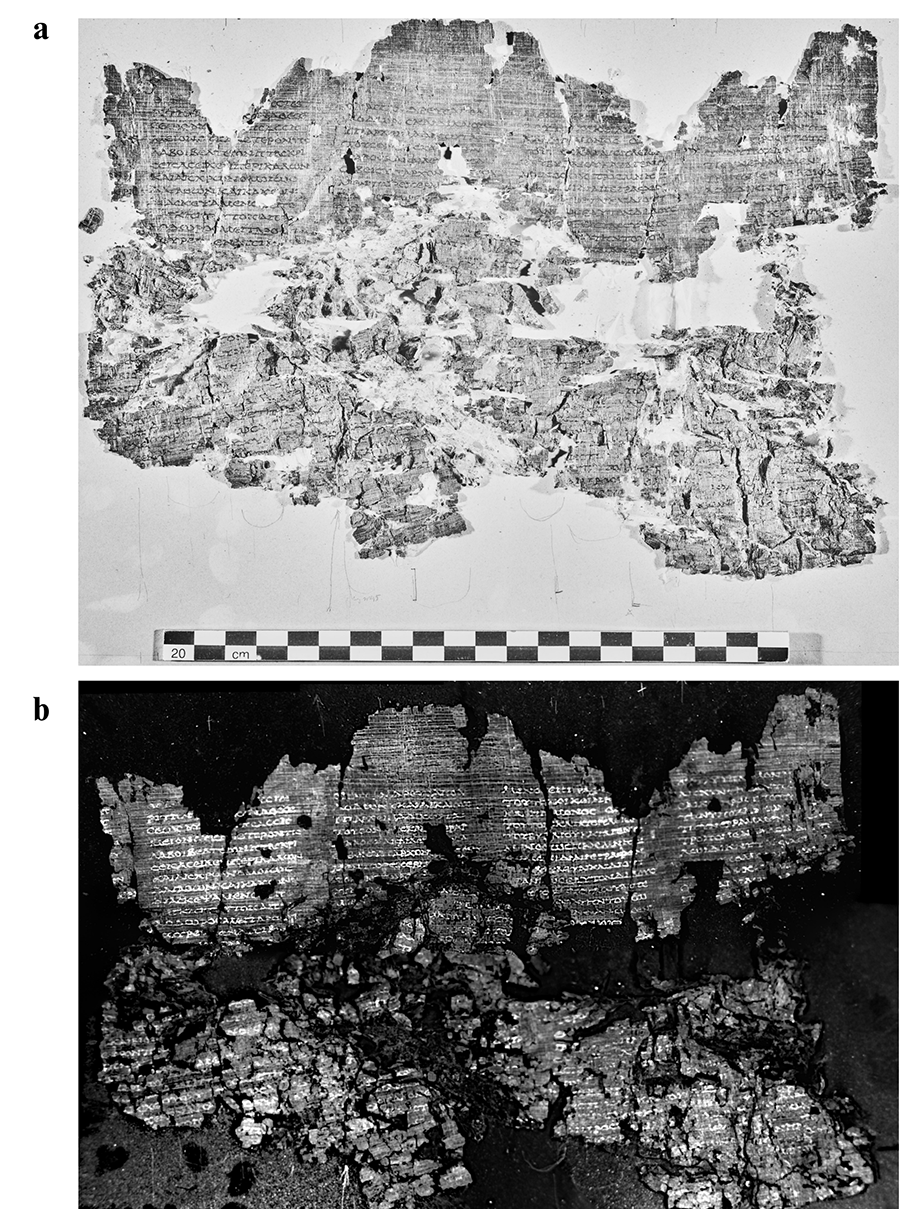
“The field of non-invasive diagnostics for cultural heritage is being enhanced by ever more advanced methods, increasingly applied in an integrated manner, which enable the visualisation of material features that would otherwise remain inaccessible,” notes Costanza Miliani, Director of CNR-Ispc. “Within this context, active thermography—an imaging technique operating in the infrared domain—has proved particularly effective in the analysis of the carbonised Herculaneum papyri. This approach allows the detection of contrast signals between the carbon-based ink and the heavily altered papyrus substrate, revealing texts that are otherwise almost completely illegible to the naked eye. It marks a significant advance, opening new prospects both for the philological study of these writings and for the informed conservation of such extremely fragile materials.”
“This result is an important recognition for our optical diagnostics laboratories, particularly for the Thermography and IR Imaging Lab, which has long developed and applied innovative methods for the non-invasive investigation of cultural heritage,” adds Ivo Rendina, Director of CNR-Isasi. “The application to the Herculaneum papyri demonstrates how advanced imaging techniques, suitably adapted to the historical and archaeological context, can recover for the scientific community and society at large a wealth of knowledge long lost to view, while also informing conservation strategies.”
“The GreekSchools project,” remarks Alessandro Lenci, Director of the Department of Philology, Literature and Linguistics at the University of Pisa, “demonstrates the importance of a multidisciplinary approach to humanistic research—a hallmark of our Department.”
Finally, great satisfaction was expressed by Silvia Scipioni, Director of the National Library of Naples: “In the past, attempts to unroll and read the Herculaneum papyri caused severe damage to the artefacts, whose extreme fragility always demands the utmost caution in evaluating analytical methods. The new technologies used by Professor Ranocchia’s team, which make it possible to reconstruct large portions of previously illegible text without causing any deterioration of the papyri, therefore perfectly reconcile the fundamental needs of preserving these materials with those—equally essential—of study and research.”
The National Library of Naples’ participation in the GreekSchools project, together with the University of Pisa and the CNR, marks its first role as a co-beneficiary of a project funded by the European Commission.

